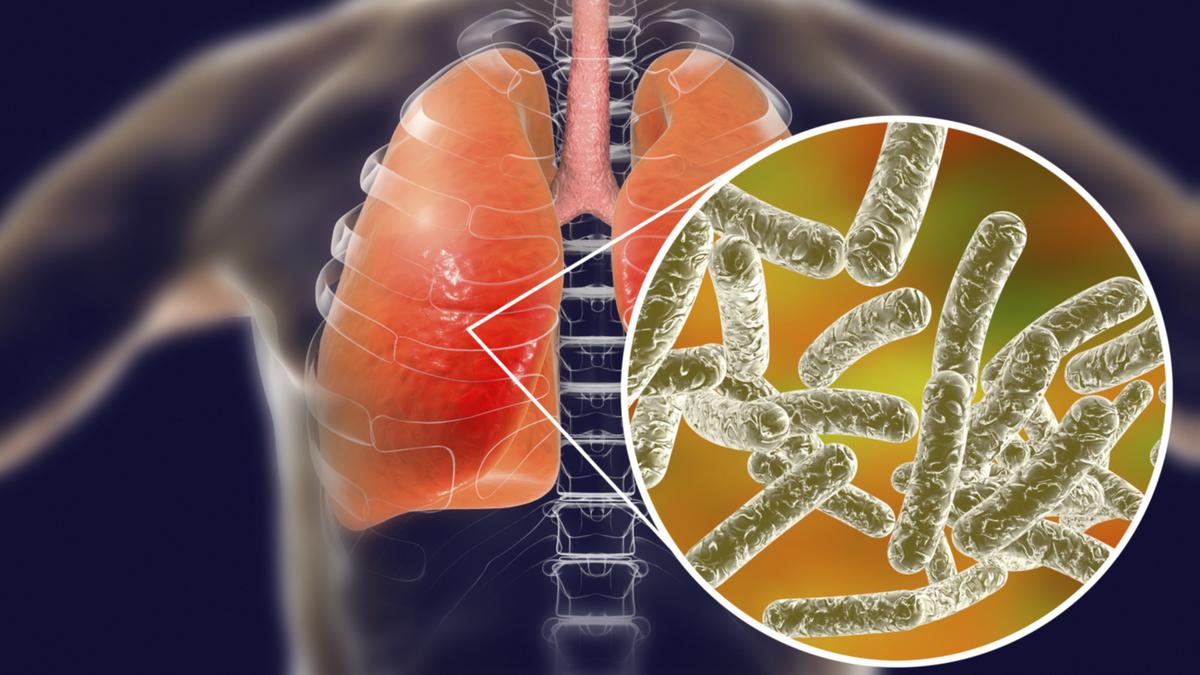The Whole Public Has Been Cautioned About Legionnaires' Disease
The whole public has been cautioned about Legionnaires' disease. Pipes and air-conditioning units in buildings should be checked for the presence of the bacterium that causes Legionnaires' disease, according to an infectious disease expert.
Author:Suleman ShahReviewer:Han JuSep 08, 202297 Shares2K Views

The whole public has been cautioned about Legionnaires' disease. Pipes and air-conditioning units in buildings should be checked for the presence of the bacterium that causes Legionnaires' disease, according to an infectious disease expert.
In Argentina in August of last year, an outbreak of pneumonia-like illness that infected 11 people and claimed four lives was attributed to the sickness, which was caused by the Legionella strain of bacteria.
Persistent coughing, fever, myalgia, and other symptoms of Legionnaires' disease can cause severe infection and even death in people with impaired immune systems and chronic lung diseases if prompt and effective treatment is not received.
The Legionella virus flourishes in water systems in buildings, including ventilation and cooling systems, hot tubs, and even swimming pools, according to a briefing on Tuesday by Dr. Rontgene Solante.
According to Solante:
“„"This bacteria grows in water and if humans are exposed to polluted water, such as in air-conditioning systems, they can inhale this through water droplets, which will enter the lungs and cause pneumonia."
He further stated that the nation has tests for Legionnaire's illness. Antibiotics can be used to treat the illness.
Solante advised those at high risk to lead a healthy lifestyle and take their medication as prescribed for illnesses like hypertension and other conditions in order to prevent the disease.
"Building water systems need to be checked on a regular basis, especially older pipes where germs might flourish. Even hotel bathrooms and swimming pools can spread germs, "added said.
What Is Legionnaires' Disease?

June Vital Signs - Legionnaires’ disease: A Problem for Health Care Facilities
Legionnaires' disease is an illness of the lungs (pneumonia) caused by Legionella bacteria. Infection happens when a person breathes in bacteria that are typically prevalent in the environment.
Typical symptoms of legionnaires' illness include fever, chills, coughing, and shortness of breath. Additionally, some people have diarrhea, loss of appetite, headaches, muscle aches, and fatigue. Pneumonia can make a person very ill; while most individuals recover, the condition can occasionally be deadly.
A person may get Legionnaires' disease if they breathe in contaminated dust or water droplets. Despite the fact that Legionella bacteria come in a variety of types, two of them are most frequently responsible for sickness are:
- Legionella pneumophila is a pathogen that can contaminate shower heads, whirlpool spas, air conditioning cooling towers, and other water sources.
- Legionella longbeachae - these bacteria can contaminate soil or potting mix.
Legionella bacteria can infect people at home, at work, or in public spaces. Between two and ten days pass after the patient is exposed to the germs before becoming ill.
The legionnaires' disease cannot be passed from one person to another.
Middle-aged and older adults, particularly those who smoke or have chronic lung disease, are most frequently affected by legionnaires' disease. People whose immune systems are impaired by drugs or illnesses including cancer, kidney failure, diabetes, or HIV are also at higher risk.
High concentrations of Legionella pneumophila bacteria can develop in warm, stagnant water. Sometimes contaminated cooling towers are linked to outbreaks (that are part of air conditioning systems in large buildings). Cleaning, disinfecting and maintaining cooling towers and plumbing systems on a regular basis prevents germs from multiplying.
The soil and potting mix frequently contain Legionella longbeachae. Follow the manufacturer's instructions on the potting mix labels to minimize exposure to potting mix dust during gardening, particularly:
- To lessen the dust, wet the potting soil
- When using potting mix, put on gloves and a P2 mask.
- Before eating, drinking, or smoking, wash your hands after handling potting soil or mix.
Lastly
Public healthofficials should use the National Outbreak Reporting System's Waterborne Disease Outbreak Surveillance System (WBDOSS) to report outbreaks of Pontiac fever and Legionnaires' disease (NORS).
In addition to the scant information provided by NNDSS, CDC maintains SLDSS to gather additional data on legionellosis cases, such as exposure historyand method of diagnosis.
In order to create a more streamlined reporting process that will be integrated with NNDSS, CDC is collaborating with partners. CDC will continue to employ SLDSS until that new technique is accessible.

Suleman Shah
Author
Suleman Shah is a researcher and freelance writer. As a researcher, he has worked with MNS University of Agriculture, Multan (Pakistan) and Texas A & M University (USA). He regularly writes science articles and blogs for science news website immersse.com and open access publishers OA Publishing London and Scientific Times. He loves to keep himself updated on scientific developments and convert these developments into everyday language to update the readers about the developments in the scientific era. His primary research focus is Plant sciences, and he contributed to this field by publishing his research in scientific journals and presenting his work at many Conferences.
Shah graduated from the University of Agriculture Faisalabad (Pakistan) and started his professional carrier with Jaffer Agro Services and later with the Agriculture Department of the Government of Pakistan. His research interest compelled and attracted him to proceed with his carrier in Plant sciences research. So, he started his Ph.D. in Soil Science at MNS University of Agriculture Multan (Pakistan). Later, he started working as a visiting scholar with Texas A&M University (USA).
Shah’s experience with big Open Excess publishers like Springers, Frontiers, MDPI, etc., testified to his belief in Open Access as a barrier-removing mechanism between researchers and the readers of their research. Shah believes that Open Access is revolutionizing the publication process and benefitting research in all fields.

Han Ju
Reviewer
Hello! I'm Han Ju, the heart behind World Wide Journals. My life is a unique tapestry woven from the threads of news, spirituality, and science, enriched by melodies from my guitar. Raised amidst tales of the ancient and the arcane, I developed a keen eye for the stories that truly matter. Through my work, I seek to bridge the seen with the unseen, marrying the rigor of science with the depth of spirituality.
Each article at World Wide Journals is a piece of this ongoing quest, blending analysis with personal reflection. Whether exploring quantum frontiers or strumming chords under the stars, my aim is to inspire and provoke thought, inviting you into a world where every discovery is a note in the grand symphony of existence.
Welcome aboard this journey of insight and exploration, where curiosity leads and music guides.
Latest Articles
Popular Articles